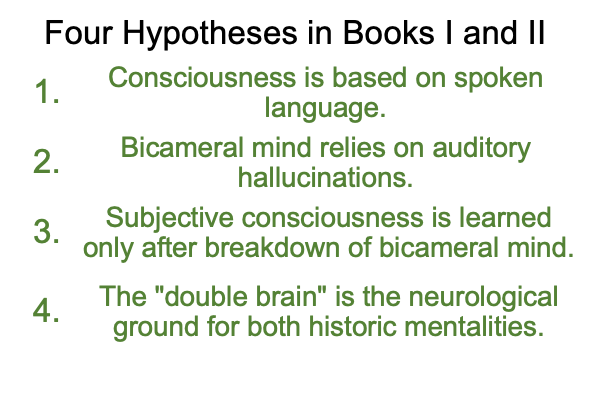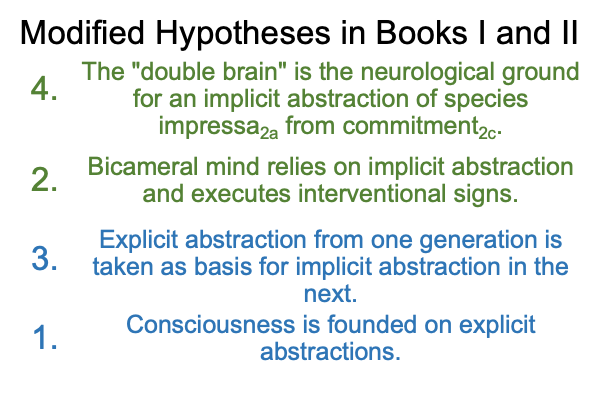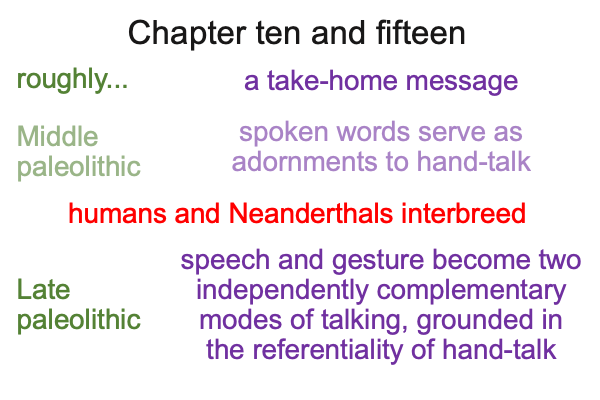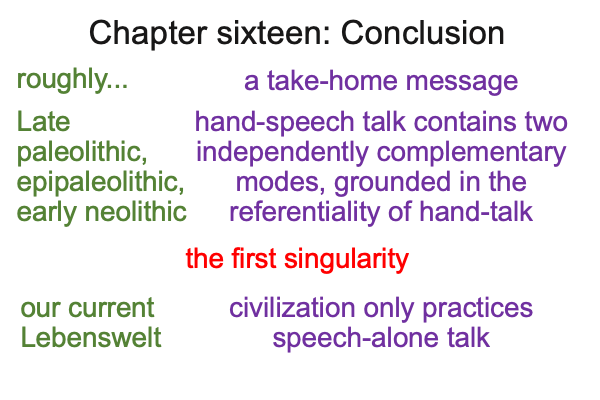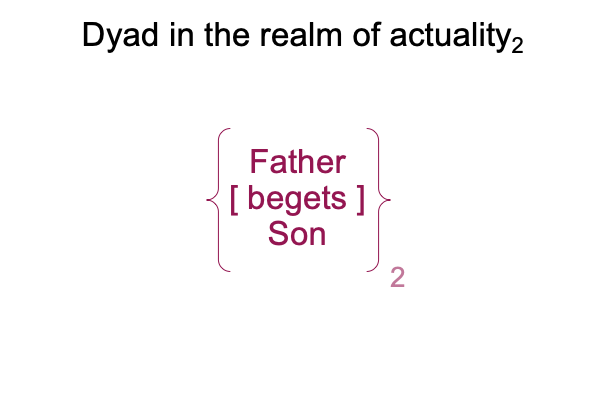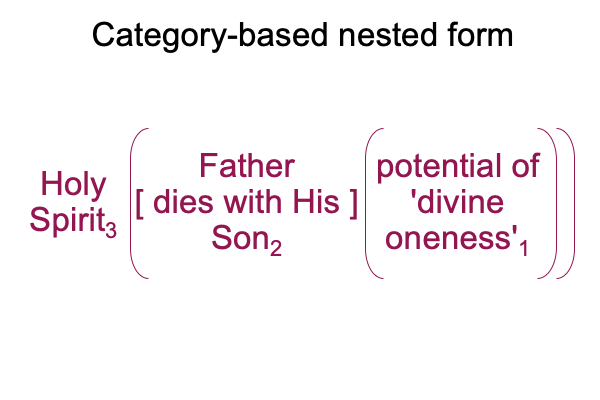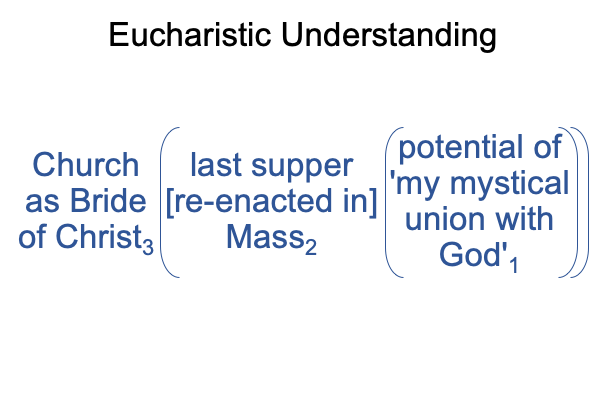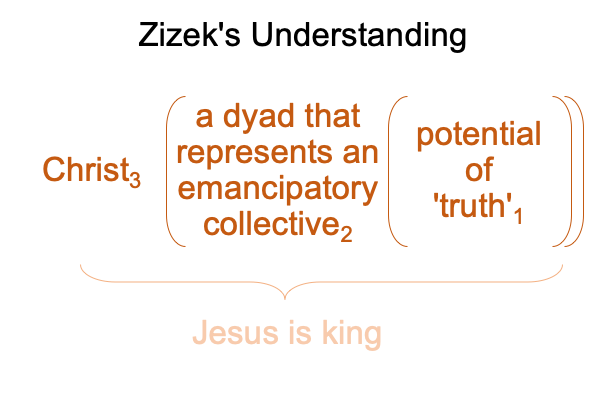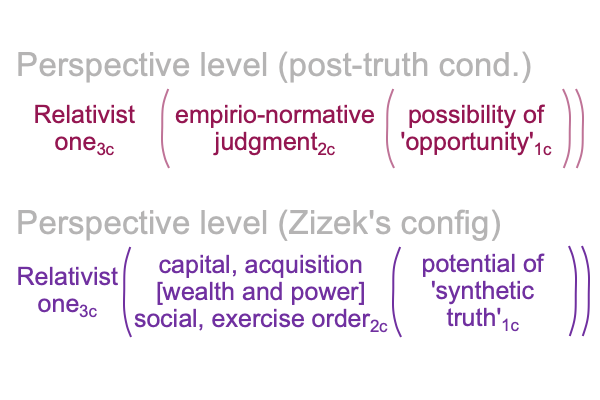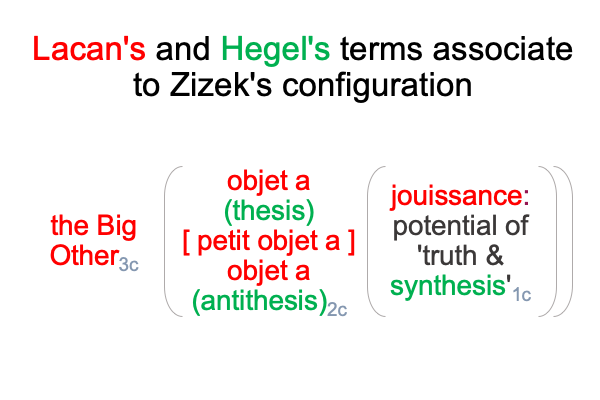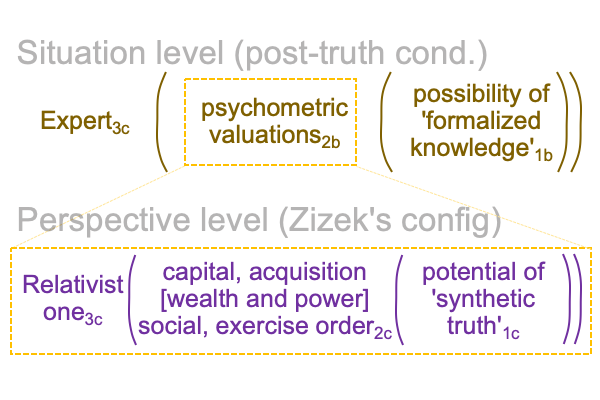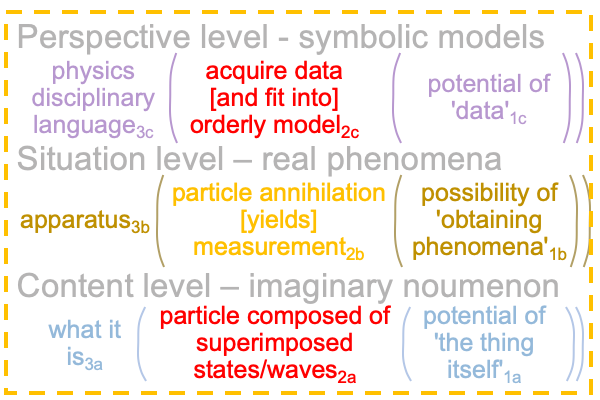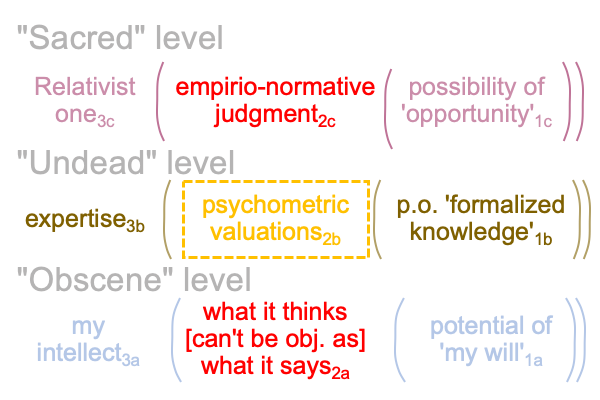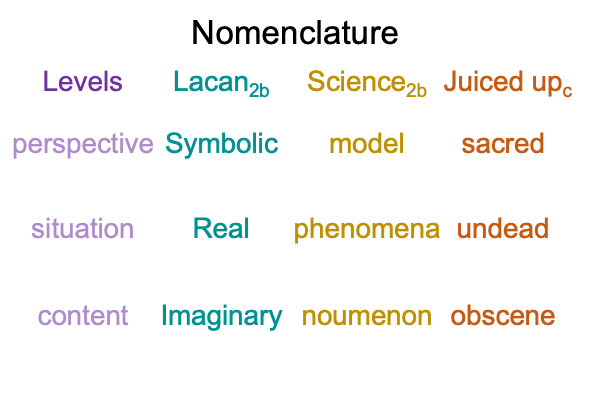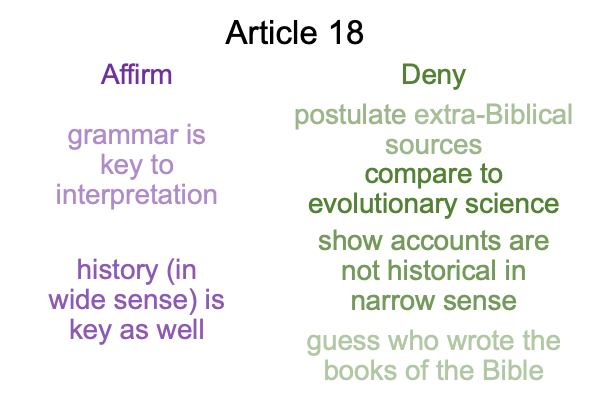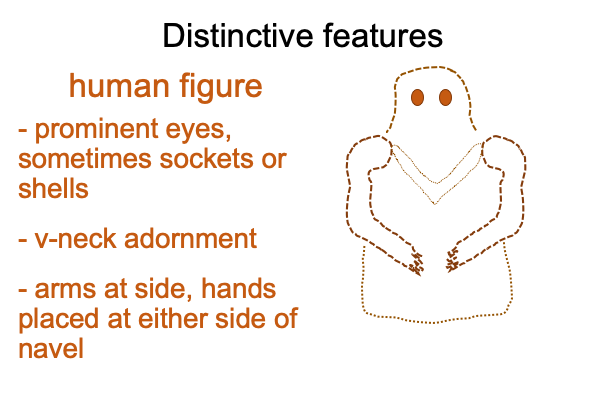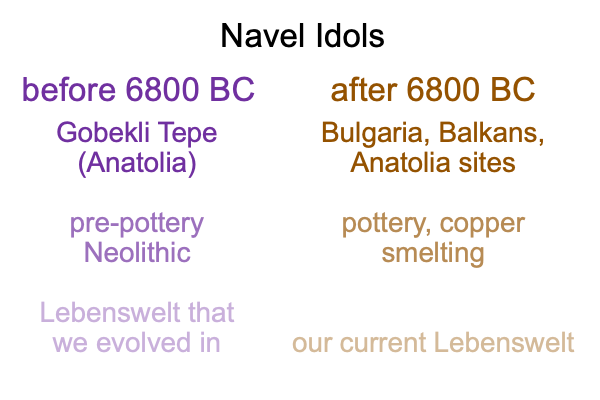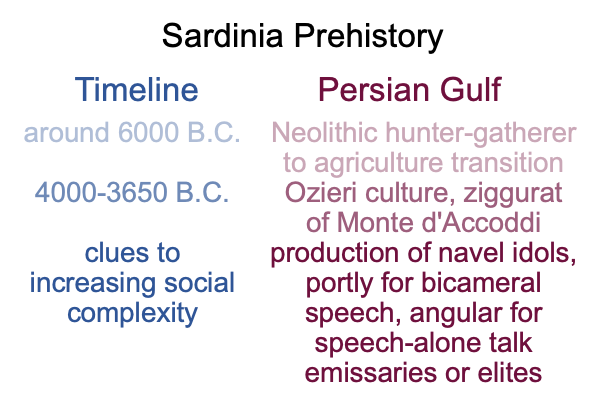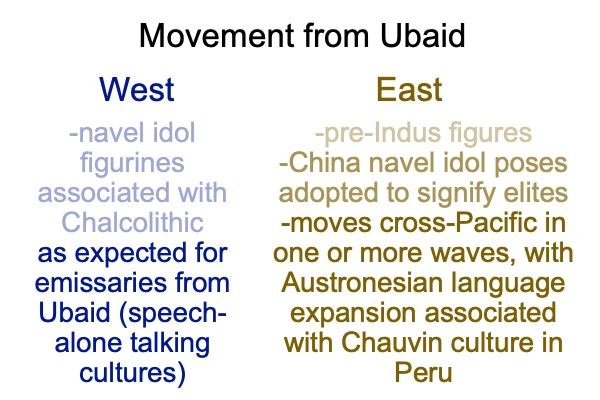Looking at Igor Pilshchikov and Mikhail Trunin’s Article (2016) “The Tartu-Moscow School of Semiotics” (Part 27 of 27)
0348 In section eight (8), the authors discuss the third post-Soviet approach, that of Juri Lotman.
The title of Lotman’s 1990 book is The Universe of Mind.
The title is somewhat funny, since the mind associates to the normal context and a universe resides in the corresponding potential.
0349 How so?
The “universe” is not the closed totality of material arrangements.
The “universe” is the open totality of semiotic arrangements.
0350 Open to what?
Messages.
Another term for “the universe of messages1” is “the semiosphere1“.
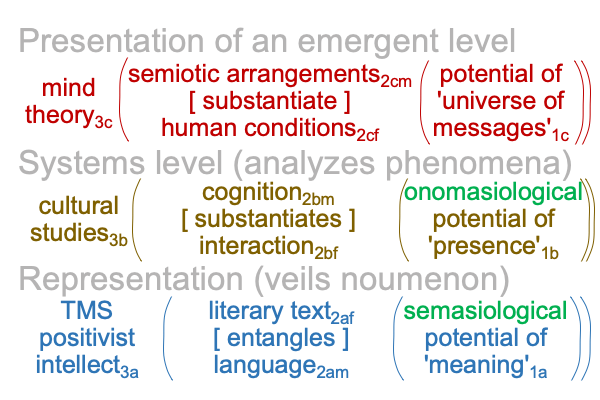
0351 On the content level, the normal context of a TMS positivist intellect3a brings the actuality of the dyad2a, {literary text2af [entangles] language2af}, into relation with the potential of ‘(positivist) meaning’1a.
On the situation level, cultural studies3b brings the dyad2b, {cognition2bm [substantiates] social interaction2bf}, into relation with the potential of ‘(civilizational) presence’1b.
On the perspective level, mind theory3c brings the dyad2c, {semiotic arrangements2cm [substantiate] human conditions2cf}, into relation with the potential of ‘the semiosphere’1c.
0352 Lotman’s derivative interscope stands right in line with Charles Peirce’s theory of evolutionary love.
The Universe of Possibility defines the category of firstness. Firstness contains a universe of messages.
The Universe of Actualities includes semiotic arrangements and belongs to the category of secondness.
The Universe of Mind3c brings the Universe of Actualities2c into relation with the potential of the Universe of Messages1c.
0353 Mind theory3c brings the dyadic actuality of {semiotic arrangements [substantiating] human conditions}2c into relation with the ‘semiosphere’1c.
Marxist theory3c brings the dyadic actuality of {material arrangements [substantiating] human conditions}2c into relation with the potential of ‘something to do with message’1c.
0354 Surely, Juri Lotman, as an old man, does not suspect that his mind theory3c stands as an alternative to Marxist theory3c.
Marxist theory3c contextualizes the message of Soviet communism1c.
The Universe of Mind3c contextualizes the semiosphere1c.
Welcome to the Fourth Age of Understanding.
0355 The concept of the semiosphere1c is an organic development of Juri Lotman and his collaborators of the Tartu-Moscow School of Semiotics.
This explains why I claim, in point 0008, that there is more to this article than meets the eye.
This examination adds value to the authors’ article, in ways hitherto unimagined.
0356 In the following figure, the virtual nested form in the category of secondness is highlighted.
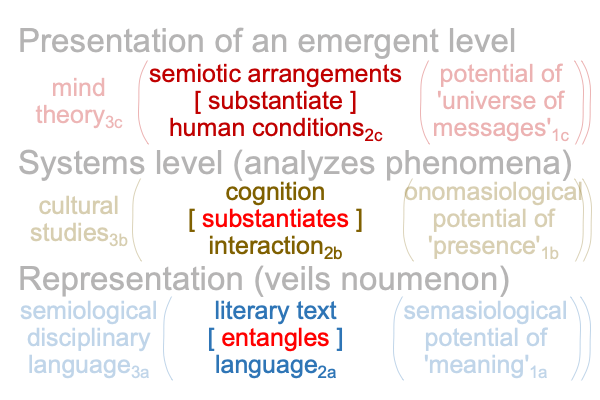
0357 The perspective-level dyad, {semiotic arrangements [substantiate] human conditions}2c virtually brings the situation-level dyad, {cognition [substantiates] cultural interaction}2b, into relation with the potential of the content-level dyad, {literary text [entangles] an aesthetic and positivist language}2a.
0358 Likewise, in the virtual nested form in the category of thirdness, mind theory3c brings cultural studies3b into relation with the possibility of the TMS positivist intellect3a.
0359 Finally, in the virtual nested form in the category of firstness, the semiosphere1c, the universe of messages1c, brings civilizational presence1b into relation with positivist meaning1a.
0360 The authors briefly discuss Lotman’s later books, which are translated into English long after his death. The authors note that these books treat issues that are rarely associated with the Tartu-Moscow School of Semiotics, even when they place its collegial collaborations in perspective.
0361 Nonetheless, some scholars wag an accusatory finger and assert, “He turned into a post-structuralist.”
0362 “Post-structuralist”?
Technical terms are so important, especially when they mean ‘something’ that common folk don’t think they mean.
There is a gap, which cannot be crossed, especially by those subject to empirio-normative domination.
Well, at least, that is what the experts on television tell me.
“Post-structuralist” is a derogatory label.
Only experts know what the label means.
0363 The authors offer a quick summary of the questions that Lotman raises in these last works. First (1), can inquirers devise a common approach to natural, social and spiritual phenomena? Second (2), how is a mind theory3c paradigmgoing to handle evolutionary (think, Lebenswelt that we evolved in) and explosive (think, our current Lebenswelt) cultural transitions. Third (3), does artistic labor serve as a workshop that builds semiotic arrangements (as matter) into the human condition (as form)?
0364 Surely, these are appropriate questions.
And, not surprisingly, the pen of Razie Mah offers literary texts that touch upon these questions. They are (1) How to Define the Word “Religion”, (2) The Human Niche and (3) An Archaeology of the Fall.
0365 The authors conclude that a global history of semiotics will tell Lotman’s tale, as well as the complicated intriguescultivating semiotic awareness beneath the watchful eyes of Soviet Socialist ideologues.
But, as far as this examiner is concerned, these modern histories may also be viewed through a lens that focuses on an illumination that harkens back to the beginning.
A light dwells deep within Slavic civilization.
0366 I wonder. Is there is an unconceived reason for why the Virgin Mary appears in Portugal, in a town bearing the name of Fatima, the daughter of the Prophet Mohammed and Khadija, and calls for the Catholic Church to consecrate her Immaculate Heart to Russia?
The visions happen in 1917, right before the Russian Revolution.
0367 In 2022, a Latin-tradition-despising pope, along with his reform-fixated Vatican-Two-promoting bishops, do precisely that. They consecrate the Immaculate Heart of Mary to Russia on March 25, 2022, at the same time when Russian (no longer Soviet!) troops enter into Ukraine. They invade in order to stop… what? Everybody in Russia apparently knows. Does anyone know in the Collective West?
0368 Perhaps not.
Is there a gap, which cannot be crossed?
Will a curtain of propaganda become transparent?
Or what?
0369 There is one more juxtaposition to make.
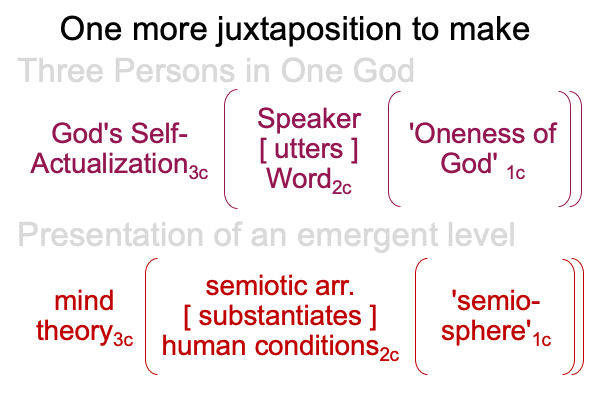
0370 The lower line should look familiar.
The triadic normal context of Lotman’s mind theory3a (now transcending Marxist theory3c) brings the dyadic actuality of {semiotic arrangements [substantiate] our current Lebenswelt}2a into relation with the monadic ‘semiosphere’1a,where the “semiosphere” is the potential of ‘the universe of messages’1a.
0371 The upper line is introduced in points 0355 though 0371 in Razie Mah’s e-book, Comments on Mariusz Tabaczek’s Arc of Inquiry (2019-2024) (part 1, available at smashwords and other e-book venues).
The triadic normal context of God’s Self-Actualization3c brings the dyadic actuality of {the Person who Speaks [utters] the Person who is the Word}2c into relation with the ‘Oneness of God’2c, where the “Oneness of God” is the monadic potential1c underlying God’s Self-Actualization3c.
0372 What does this juxtaposition inspire me to imagine?
Does it seem that the Speaker2c occupies the space for semiotic arrangement2cm?
Does it seem that Word2c, who creates the Lebenswelt that we evolved in (see Genesis 1-2.3) as well as our current Lebenswelt (see Genesis 2.4-10), occupies the space for the human condition2cf?
0373 Does it seem that God’s Self-Actualization3c encompasses a theoretical Universe of Mind3c?
Does it seem that the Oneness of God1c manifests the omnipresence and the omniscience of a universe of messages1c?
0374 It almost makes me wonder whether there is a post-post-truth condition.
0375 There is a story. It goes like this.
After the famous Russian philosopher, Marxist academic and scholar to be reckoned with, Juri Lotman, dies, he finds himself in a waiting room, in what looks to be an old Basilica. After a few minutes, the wooden door creaks open and he is greeted by St. Methodius, himself.
Lotman, confident of his own genius even in death, says, “Methodius, what can you tell me that I don’t already know?”
Methodius grins and says, “You’ve been working for us all along.”
0376 I thank the authors for this essay, published a decade ago, and fresh enough to support the fermentation of this examination.

